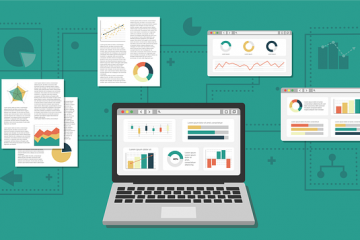MM038 – NextGenerationEU: a closer look to the plans for a digital future
In December 2020, the European Parliament approved, within the European budget 2021-2027, the NextGenerationEU, a proposal for 750 billion Euros to be injected into national economies, with the aim to sustain the recovery phase during and after the strike of the pandemic.
Of 209 billion euros in loans and grants, that our country will benefit through the years, around a quarter of these resources (46.18 billion euros according to the latest document of the Ministry of Economy and Finance of 12th January) will be employed to boost the digitization process in Italy.
These funds represent a unique opportunity to reduce the digitization gap between our country and the rest of the European Union. Italy is in fact much far behind in this respect; a delay that the current health and social crisis has made even more evident.
The DESI 2020 (Digital Economy and Society Index) aims at evaluating different aspects of technological life in the various countries, including connectivity and digital services offered by the PA. This index, developed by the European Commission, ranks Italy at the 25th place out of 28 EU states. Behind us, only Romania, Greece and Bulgaria.

This data explains why Public Administration is going to be one of the main areas of investment, with 11.45 billion Euros. Cutting the inefficiencies and introducing a massive simplification is crucial on the one hand to make the central and local administrations more functional and responsive, while on the other hand to be more attractive to foreign investments.
The greatest intervention will therefore occur on technological equipment and on strengthening the digital skills of the PA personnel through specialized training courses. Another priority is creating a national cloud through one or more National Strategic Poles, that are going to host some governmental data centers. This seeks to ensure greater data sharing and interoperability, making it easier for citizens and organizations to access and exploit digital services, meanwhile reinforcing the overall cybersecurity of the system. Interventions will also simplify, to a certain degree, some administrative procedures and reorganize the PA’s workplaces, with the creation of coworking and smart working spaces, training centers and technical-organizational innovation poles.
Another substantial share of 26.73 billion Euros (58% of the total digitization funds) will be instead employed for the development and modernization of the Italian production system. The purpose is to boost innovation and digitization, trying to reignite the investment cycle that underwent a significant blockade due to the pandemic. The funds will be split into two main portions: the former dedicated to the “Transition 4.0” project (18.98 billion Euros) and the latter on building high-speed connection, 5G and satellite monitoring (7,50 billion Euros).

As for the “Transition 4.0” project, it includes fiscal advantages for those firms that are willing to invest in equipment and immaterial assets related to the digital transformation, as well as in R&D and technology innovation. According to the European Commission, Italy is a “Moderate Innovator”, but still below the European average. This is the reason why the government pursues to foster and support the growth and internationalization of SMEs and strategic value chains, with projects aimed at raising the competitiveness of the Made in Italy on the global market.
The other aspect the Italian Government has deemed crucial to ensure that our country achieves the European objective of a fully inclusive digital society, is to accelerate the creation of a digital infrastructure and of a diffused high-speed connection (ultra-broadband and 5G) throughout the national territory. The purpose is to reduce the existing infrastructure gap in some areas of the country due to social and geographical inequalities and to offer advanced services to both citizens and organizations. Benefits will include faster data transmission, higher capacity and lower latency.
A last share of 8 billion Euros will be devoted to Tourism and Culture 4.0 with the following breakdown:
- Cultural Heritage for next generations (2.7 billion Euros): interventions to restore part of the national heritage and make it more attractive, as well as platforms and digital strategies to allow citizens and operators to improve the fruition experience and offer new services.
- Redevelopment of villages, parks, historic gardens and suburbs (2.4 billion Euros)
- Initiatives to support the cultural operators in the digital transition (2.9 billion Euros)
In a nutshell, this is an incredible opportunity for both the public and private sectorsto plan and drive an effective digital evolution process. In these regards,a company like Mediamente Consulting is ready to provide anend-to-end support on the side of data management and analytics.
I would like to conclude by quoting President Ursula von der Leyen, which provide a clear sense of the overall effort put in place to support the recovery phase that is about to start in the following months:
“[…] NextGenerationEU is our ally in this fight, and it is our hope in this fight. It is also a unique opportunity for the Member States to work together on our priorities: the European Green Deal, the digitalisation and resilience. NextGenerationEU is more than money. It is a very strong message of solidarity and of trust in the European Union […]”.
Bibliography
https://elettricomagazine.it/attualita-news/recovery-plan-ultimo-treno-digitalizzazione-italia/
https://www.mise.gov.it/index.php/it/transizione40
https://ec.europa.eu/growth/industry/policy/innovation/scoreboards_en
https://www.wired.it/attualita/politica/2020/12/11/recovery-fund-accordo-ue/?refresh_ce=
https://www.rogers.com/business/blog/en/how-will-5g-impact-business
https://bandaultralarga.italia.it/en/
https://formiche.net/2018/05/5g-imprese-cittadini/
https://ec.europa.eu/commission/presscorner/detail/en/STATEMENT_21_563
(Banner by Gerd Altmann from Pixabay)


